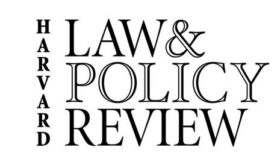Jay Willis
Thanks to a flurry of recent activism and publicity, it’s little secret that sexual assault and sexual violence are serious problems in American schools, especially college campuses. Though the reported statistics vary somewhat, the most-cited Department of Justice report found that between 1 in 4 and 1 in 5 women are victims of sexual assault during their college careers. New guidance issued by the Department of Education aims to address this problem under a theory not often associated with sexual assault: civil rights in education.
A recent report issued by the Center for Public Integrity suggests that the problem may be worse than statistics alone might suggest. Title IX of the Civil Rights Act of 1972 prohibits sex discrimination in federally funded educational institutions and allows students to complain to the Department of Education if their school, among other things, fails to conduct a thorough investigation of their claims. However, the CPI report found that students rarely know of their ability to file enforcement complaints and that the Department rarely sanctions schools in the event that students do complain. Essentially, a lack of effective enforcement has kept victims of sexual assault from the protections that Title IX provides them.
Now, it appears that educators and public officials are taking steps to close this enforcement gap. Yesterday, Vice President Joe Biden and Secretary of Education Arne Duncan unveiled new Department of Education guidelines that reiterate schools’ Title IX obligations to investigate on-campus sexual assaults. Among other clarifications, the 19-page guidance letter reiterates that Title IX requires schools to proactively investigate allegations of sexual assault when it “knows or reasonably should know of possible sexual violence,” even if the victim declines to file an official complaint of their own. The guidance also emphasizes that concurrent criminal investigations do not relieve schools of their obligations, particularly noting that because the two standards of proof are different, an alleged perpetrator’s conduct may violate Title IX even if police do not find sufficient evidence of a criminal violation.
That it was Biden announcing the new guidelines comes as little surprise; a longtime advocate of women’s rights, then-Senator Biden authored the landmark Violence Against Women Act of 1994 and even discussed a comprehensive plan to address domestic violence as part of his past presidential campaign platforms. In his remarks yesterday, Biden singled out the anachronistic blame-the-victim discourse as a major contributor to under-investigated on-campus sexual assaults, emphasizing that responsibility for sexual assault “has been, for too many centuries, allocated in a way that’s totally irrelevant and inappropriate.”
The Department’s guidance smartly addresses two of the major factors that contribute to the appallingly high level of on-campus sex crimes. First, uncooperative witnesses or a lack of physical evidence too often derail criminal investigations, allowing perpetrators to avoid significant sanctions and robbing the victim of the justice they seek. By redefining sexual assault as both a crime and a violation of women’s civil rights in the educational environment, the newly-issued regulations allow the federal government to play a role, when necessary, in ensuring that the schools it funds are safe for all students. Second, when on-campus sexual assaults go unreported or unresolved, a “hostile sexual environment” results in which women feel unsafe within the confines of their own educational environment. Announcing an expansion in the use of institutional enforcement tools provides women with a powerful weapon against this residual effect of what is often thought of as a crime that only affects the individual victim. Yesterday’s declaration that students have the right to a campus free from sexual assault is both a welcome confirmation of the broad scope of Title IX and an important step in ensuring a safe campus environment for all students.
